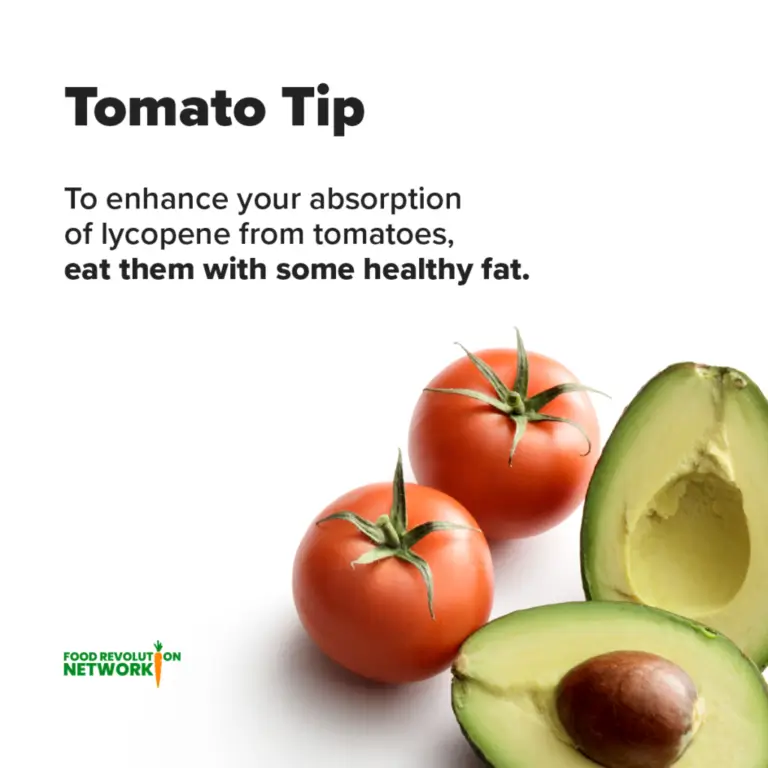Written by Andrew Akhaphong, MS, RD, LD, Mackenthun’s Registered Dietitian
Updated September 2, 2024
Tomatoes are a native crop to South America; during the Spanish colonization of the Americas the Spaniards brought with them tomatoes for trade. Tomatoes were not available for commercial production in the United States until the mid-1800s.(1) Behind potatoes, tomatoes are the second most consumed crop.(1) This includes forms such as fresh and processed versions (sauce, ketchup, salsa, etc.).
The agricultural marketing research center reported in 2020 there were 12,619 tons of market tomatoes and 11,312,256 tons of processing tomatoes.(1) In 2017 Americans consumed on average 18 pounds of fresh tomatoes and 66 pounds of processed tomatoes per person.(2) Because tomatoes are a warm-season crop there are 20 states that commercially produce them for grocery retailers across the country.(1) With advances in agriculture science and technology this allowed for colder climates such as Minnesota to allow for production in commercial greenhouses.
Oftentimes consumers would believe that fresh produce is healthier and more nutritious. Studies show that processed tomatoes contain double the amount of nutrients.
Processing of Tomatoes
Common methods of food processing include freezing, canning, and drying. As consumers we often think about the boxed macaroni and cheese, or bags of potato chips. In fact, Americans have been processing food for years to preserve and increase availability of foods throughout the year such as transforming summer strawberries into delicious jam.
To read more about food processing, visit the link below.
https://mackenthuns.com/processed-ultra-processed-foods-health/
Nutrient availability differ between fresh tomatoes and processed tomatoes based on moisture level and total surface area of digestible tomato. Fresh tomatoes are estimated to have 5-6% of digestible surface area while processed tomatoes such as paste increases it to 20-37%.(3,4) The reason processed tomatoes have higher digestible surface area is 87% of the tomato contains insoluble (indigestible) fiber in the form of hemicellulose, cellulose, and lignins.(5) Processed tomatoes have lower insoluble fiber content, improving availability of nutrients for absorption. Diets high in insoluble fiber have been shown to decrease absorption of some nutrients, especially those that depend on fat to improve absorption such as Vitamins A, D, E, and K.(6,7) Tomatoes provide approximately 18-milligrams of calcium; studies show high insoluble fiber diets may reduce calcium absorption.(7)
Nutrient Benefits of Canned Tomatoes

Canned products like Rao’s® arrabbiata sauce with your favorite pasta is an excellent way to enhance the nutrient density of your meals. The following nutrients are found in the indigestible skin of tomatoes, but made available for absorption by processing.
Lycopene is a carotenoid; a type of Vitamin-A with antioxidant properties. This nutrient is stored in the skin of the tomatoes which gives the tomatoes their shades of red. Consuming canned products like Rao’s® can provide approximately 13.44-micorgrams of lycopene per 100 gram serving of tomatoes while fresh tomatoes can be 0.88-micrograms per 100 gram serving.(8)
Lycopene has been shown to protect vital cells such as DNA and proteins from carcinogens.(9) One study for example found lycopene slows down communication from the insulin-like growth factor 1 pathway. This pathway, when heightened, increases the risk for breast cells to reproduce uncontrollably leading to breast cancer.(10)
Phylloquinone is a type of Vitamin K. This nutrient is critical for blood clotting. It supports our liver to develop a protein called fibrinogen which allows platelets in our blood to begin clotting and closing the wound.(11)
Cholinergic acid is an antioxidant. Studies show persons who consume at least 13.5-grams of cholinergic acid showed improvements in blood sugars, insulin resistance, and improved blood pressure.(12)
Slow Cooker Salsa Chicken
By Beth of Budget Bytes, November 4, 2023
What You Need:
- 2 pounds boneless, skinless chicken breasts
- 2 teaspoon chili powder
- ½ teaspoon garlic powder
- ½ teaspoon onion powder
- 1, 16-oz jar salsa
What You Do
- Place the chicken breasts in the slow cooker. Sprinkle the chili powder, garlic powder, and onion powder over the chicken, then pour the salsa on top.
- Place the lid on the slow cooker and cook on high for 2.5 hrs or low for 5 hours.
- Test the chicken to make sure it’s tender enough to pull apart with a fork. If not, replace the lid and cook for an additional 30 minutes on high or one hour on low.
- Shred the chicken with two forks and stir to combine with the salsa and liquid in the pot. Serve hot or refrigerate until ready to use. Add the salsa chicken to your favorite tacos, burritos, nachos, salads, and more!

References:
- AgMCR. Tomatoes. Updated November 2021. Accessed Apr 26, 2024. https://www.agmrc.org/commodities-products/vegetables/tomatoes
- Wu X, Yu L, Pehrsson PR. Are processed tomato products as nutritious as fresh tomatoes? Scoping review on the effects of industrial processing on nutrients and bioactive compounds in tomatoes. Adv Nutr. 2022;13(1):138-151. doi: 10.1093/advances/nmab109
- Barrett DM, Weakley C, Diaz JV, Watnik M. Qualitative and nutritional differences in processing tomatoes grown under commercial organic and conventional product systems. J Food Sci. 2007;72(9):C441-C451. doi.org/10.1111/j.1750-3841.2007.00500.x
- Koh E, Charoenprasert S, Mitchell AE. Effects of industrial tomato paste processing on ascorbic acid, flavonoids, and carotenoids and their stability over one-year storage. J Sci Food Ag. 2012;92(1):23-28. doi.org/10.1002/jsfa.4580
- Claye SS, Idouraine A, Weber, CW. Extraction and fractionation of insoluble fiber from five fiber sources. Food Chem. 1996;57(2):305-310. doi.org/10.1016/0308-8146(95)00250-2
- Lattimer JM, Haub MD. Effects of dietary fiber and its components on metabolic health. Nutrients. 2010;2(12):1266-1289. doi: 10.3390/nu2121266
- Shah M, Chandalia M, Adams-Huet B, Brinkley LJ, Sakhaee K, et al. Effect of a high-fiber diet compared with a moderate-fiber diet on calcium and other mineral balances in subjects with type 2 diabetes. Diabetes Care. 2009;32(6):990-995. doi: 10.2337/dc09-0126
- Story EN, Kopec RE, Schwartz SJ, Harris KG. An update on the health effects of tomato lycopene. Annu rev Food Sci Technol. 2010;1(10). doi: 10.1146/annurev.food.102308.124120
- Khan UM, Sevindik M, Zarrabi A, Nami M, Ozdemir B, et al. Lycopene: food sources, biological activities, and human health benefits. Oxid med Cell Longev. 2021;2713511. doi: 10.1155/2021/2713511
- Kelkel M, Schumacher M, Dicato M, Diederich M. Antioxidant and anti-proliferative properties of lycopene. Free Rad. 2011;45(8): doi.org/10.3109/10715762.2011.564168
- Basset GJ, Latimer S, Fatihi A, Soubeyrand E, Block A. Phylloquinone (Vitamin K1): occurrence, biosynthesis and functions. Mini Rev Med Chem. 2017;17(12):1028-1038. doi: 10.2174/1389557516666160623082714
- Yu Y, Zhang Z, Chang C. Chlorogenic acid intake guidance: sources, health benefits, and safety. Asia Pac J Clin Nutr. 2022;31(4):602-610. doi: 10.6133/apjcn.202212_31(4).0003





